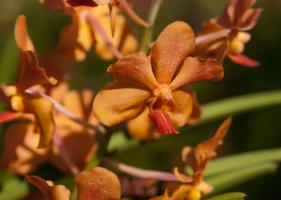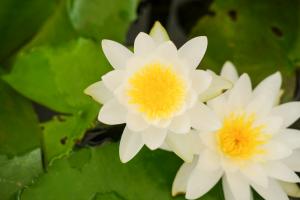Can You Plant a Royal Empress Tree in the Fall?
If you are looking to add an exotic and stunning tree to your garden, the Royal Empress Tree (Paulownia tomentosa) might be the perfect choice. This fast-growing tree, which originated in China, is known for its large leaves, beautiful flowers, and ability to adapt to a variety of soil types and climates. However, if you are considering planting a Royal Empress Tree, you might wonder if fall is a good time to do it. In this article, we will explore the answer to this question and provide you with some useful tips for planting and caring for a Royal Empress Tree.
Can Royal Empress Trees be Planted in the Fall?
The short answer is yes, you can plant a Royal Empress Tree in the fall. However, there are some things you need to consider before planting, such as the climate in your area and the maturity of the tree. In general, fall is a good time to plant trees because the soil is still warm, which encourages root growth, and the weather is cooler, which reduces stress on the tree. However, if your area experiences harsh winters, it might be better to wait until spring to plant the tree. On the other hand, if you live in a warmer climate, fall might be the ideal time to plant the tree, as it will have more time to establish roots before the heat of summer arrives.
Tips for Planting a Royal Empress Tree in the Fall
If you decide to plant a Royal Empress Tree in the fall, here are some tips to help you ensure the success of your tree:
Choose a sunny location: Royal Empress Trees need full sun to grow well, so make sure you choose a spot that receives at least six hours of direct sunlight per day.
Prepare the soil: The soil should be well-draining and rich in nutrients. If your soil is clayey or sandy, you might need to amend it with organic matter.
Plant the tree: Dig a hole that is twice as wide as the root ball and slightly shallower. Place the tree in the hole and backfill with soil, pressing firmly to eliminate air pockets. Water thoroughly.
Mulch: Apply a layer of mulch around the base of the tree, but make sure you keep it away from the trunk. Mulch helps to retain moisture and suppress weeds.
Water the tree: Water your tree regularly, especially during the first year after planting, to help it establish roots. Make sure the soil stays evenly moist but not waterlogged.
Caring for a Royal Empress Tree
Once your Royal Empress Tree is established, it requires little maintenance. Here are some things you can do to help your tree thrive:
Prune: Prune your tree in late winter or early spring to remove any dead or damaged branches and shape the tree.
Fertilize: You can apply a general-purpose fertilizer in early spring to give your tree a boost of nutrients.
Protect from pests: Royal Empress Trees are relatively pest-free, but you might need to watch out for caterpillars that feed on the leaves. If you notice a problem, you can treat it with an insecticidal soap or oil.
In conclusion, fall is a suitable time to plant a Royal Empress Tree, as long as you take into account the climate in your area and follow the proper planting and care instructions. By adding this exotic and stunning tree to your garden, you can enjoy its beauty and shade for years to come.

 how many times do yo...
how many times do yo... how many planted tre...
how many planted tre... how many pine trees ...
how many pine trees ... how many pecan trees...
how many pecan trees... how many plants comp...
how many plants comp... how many plants can ...
how many plants can ... how many plants and ...
how many plants and ... how many pepper plan...
how many pepper plan...































